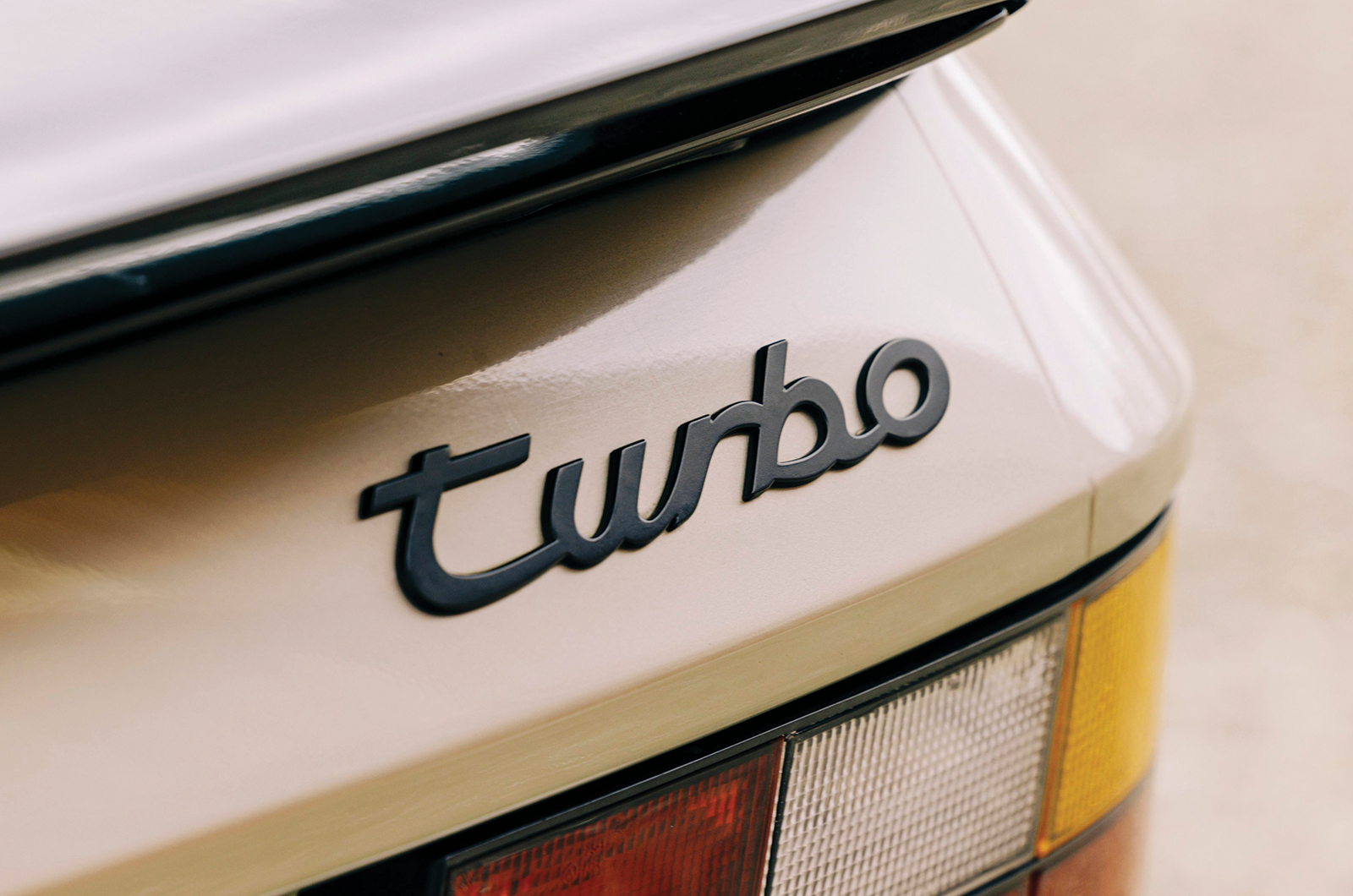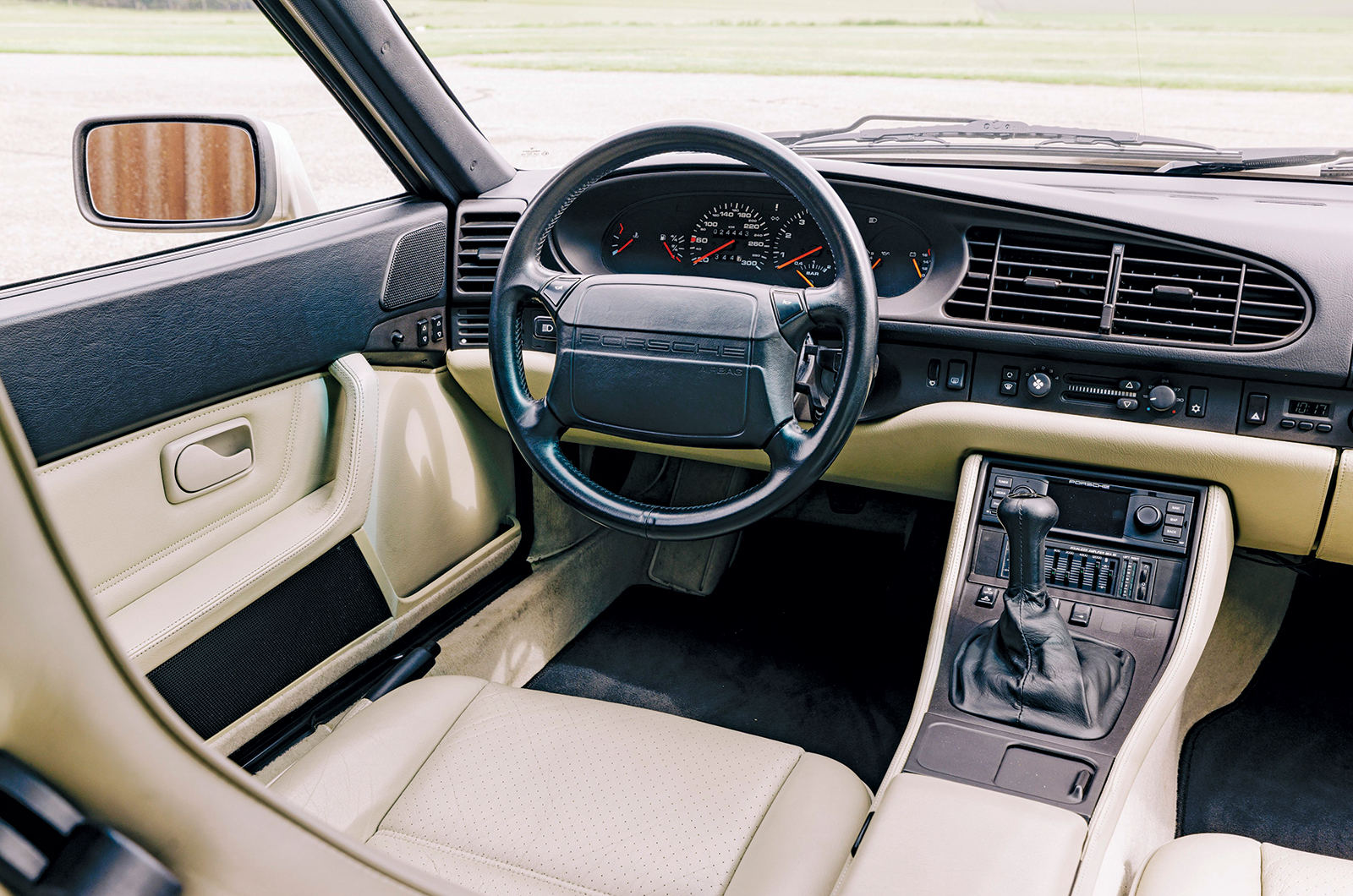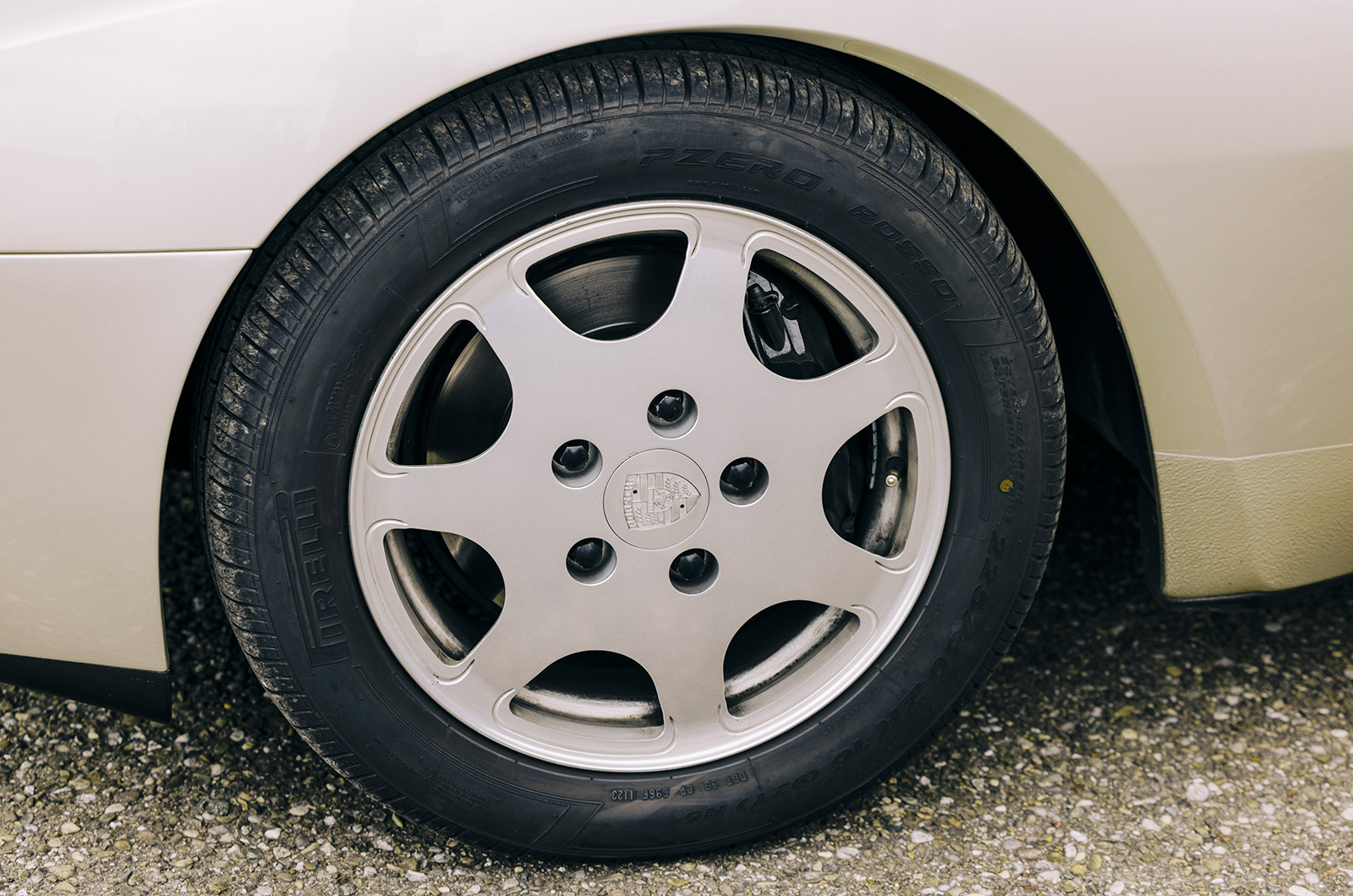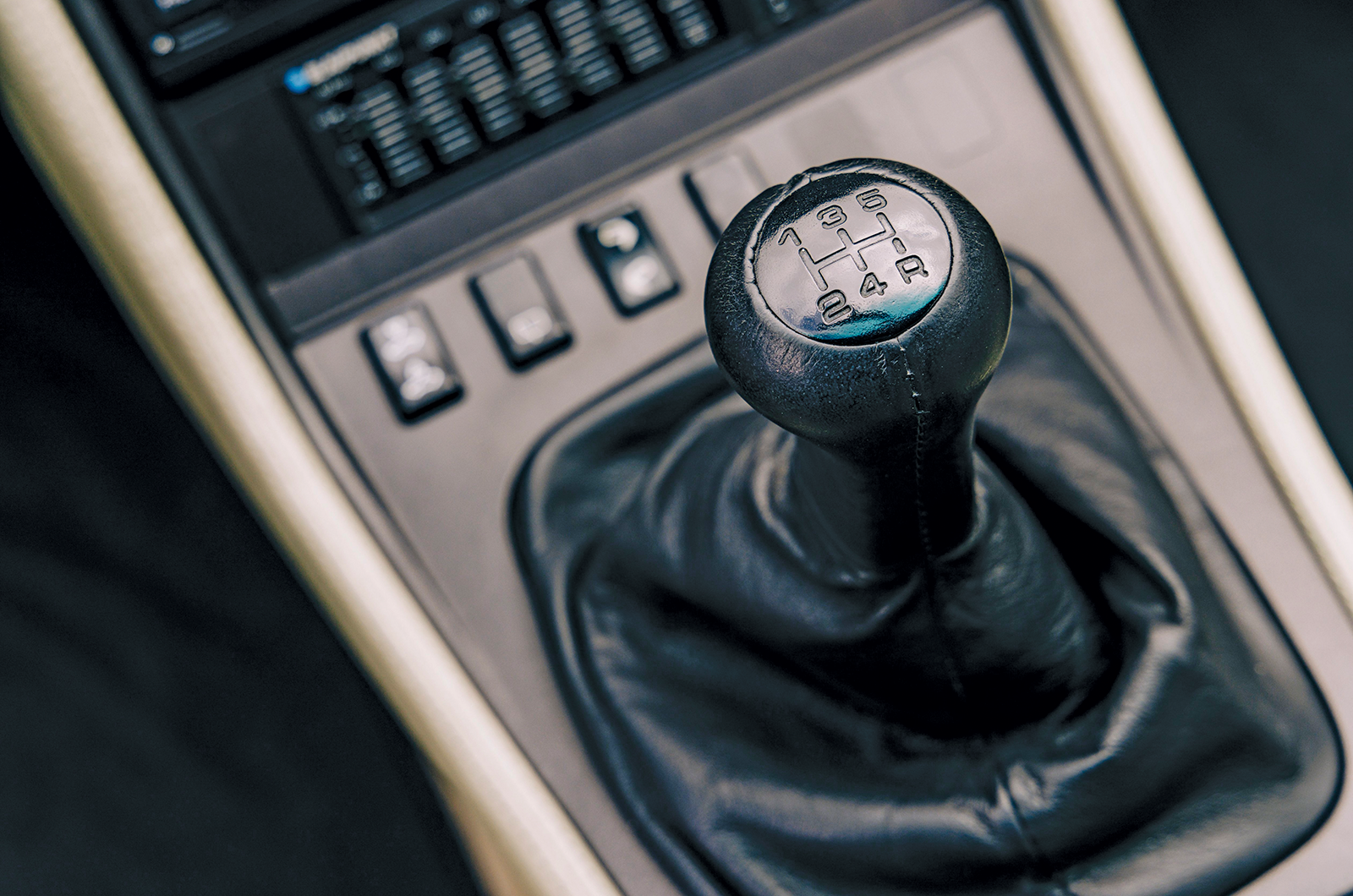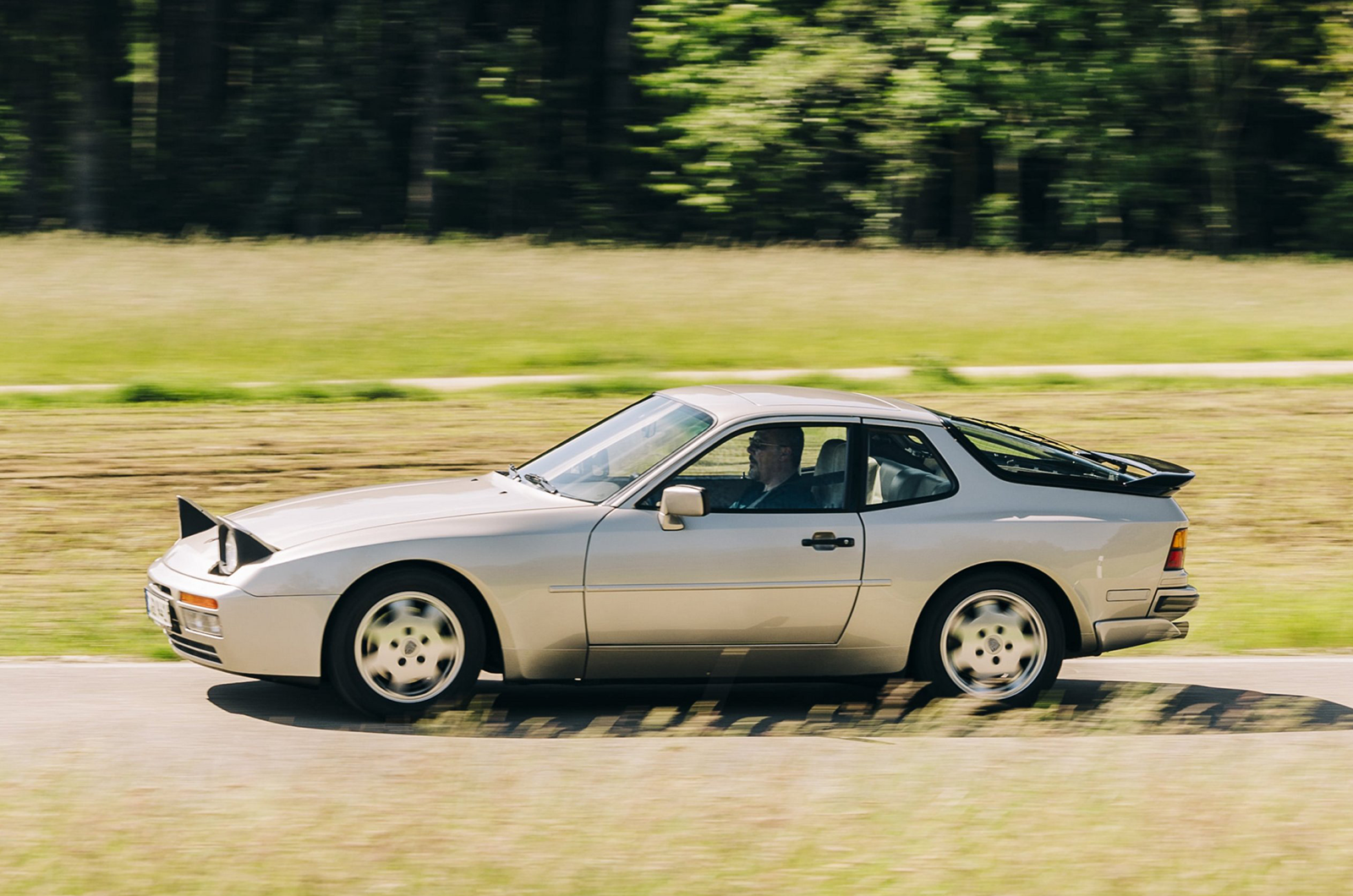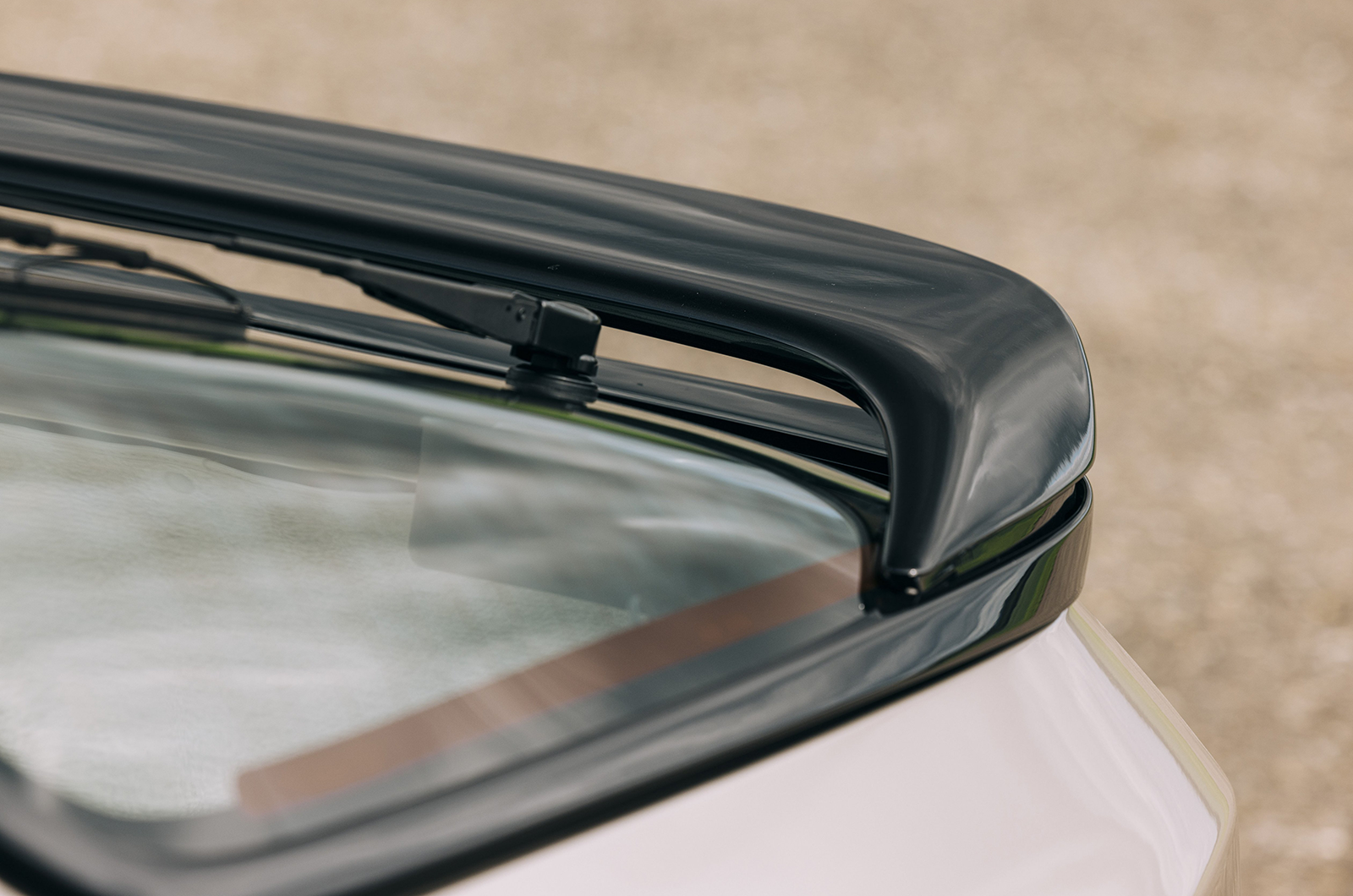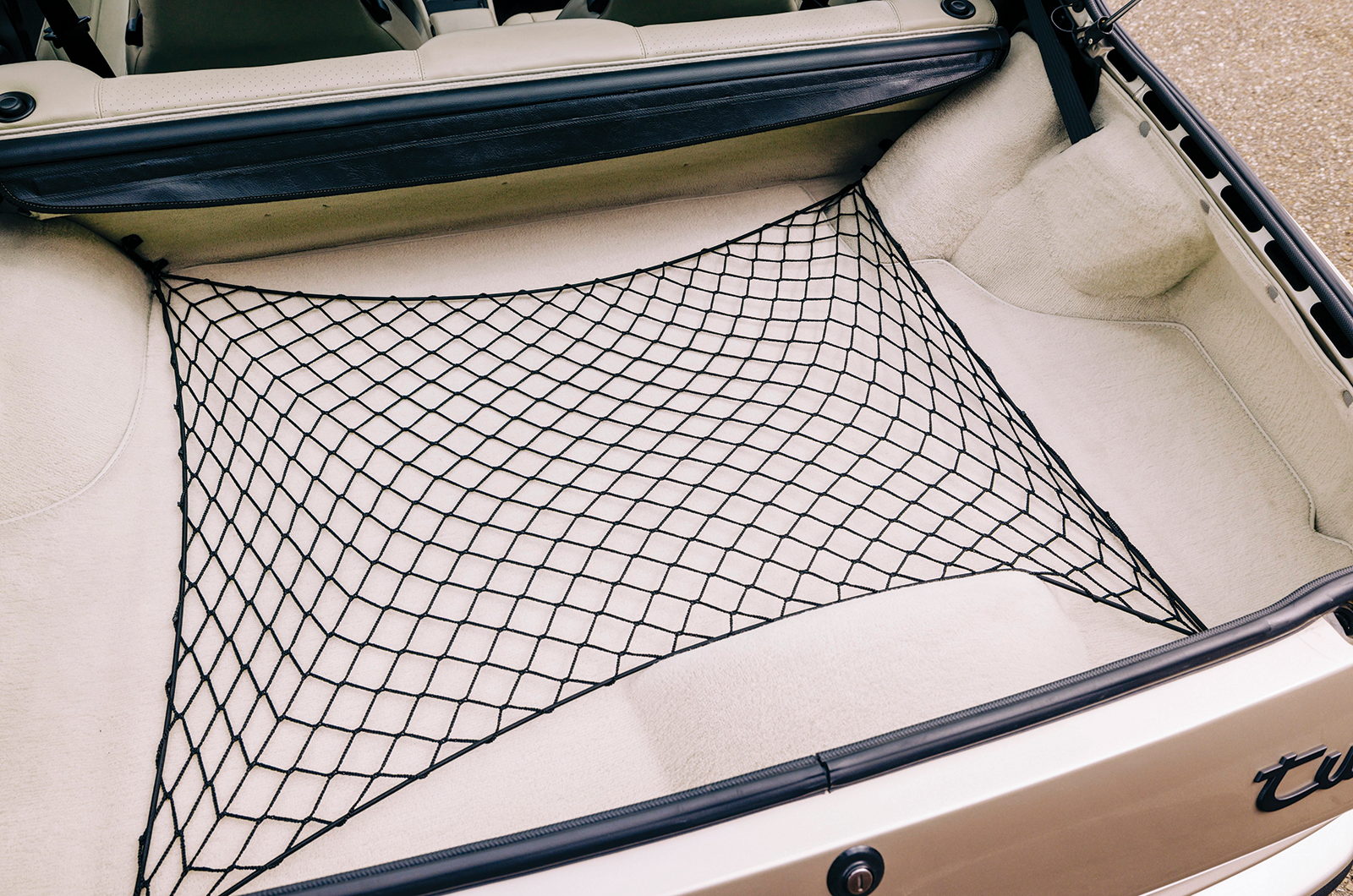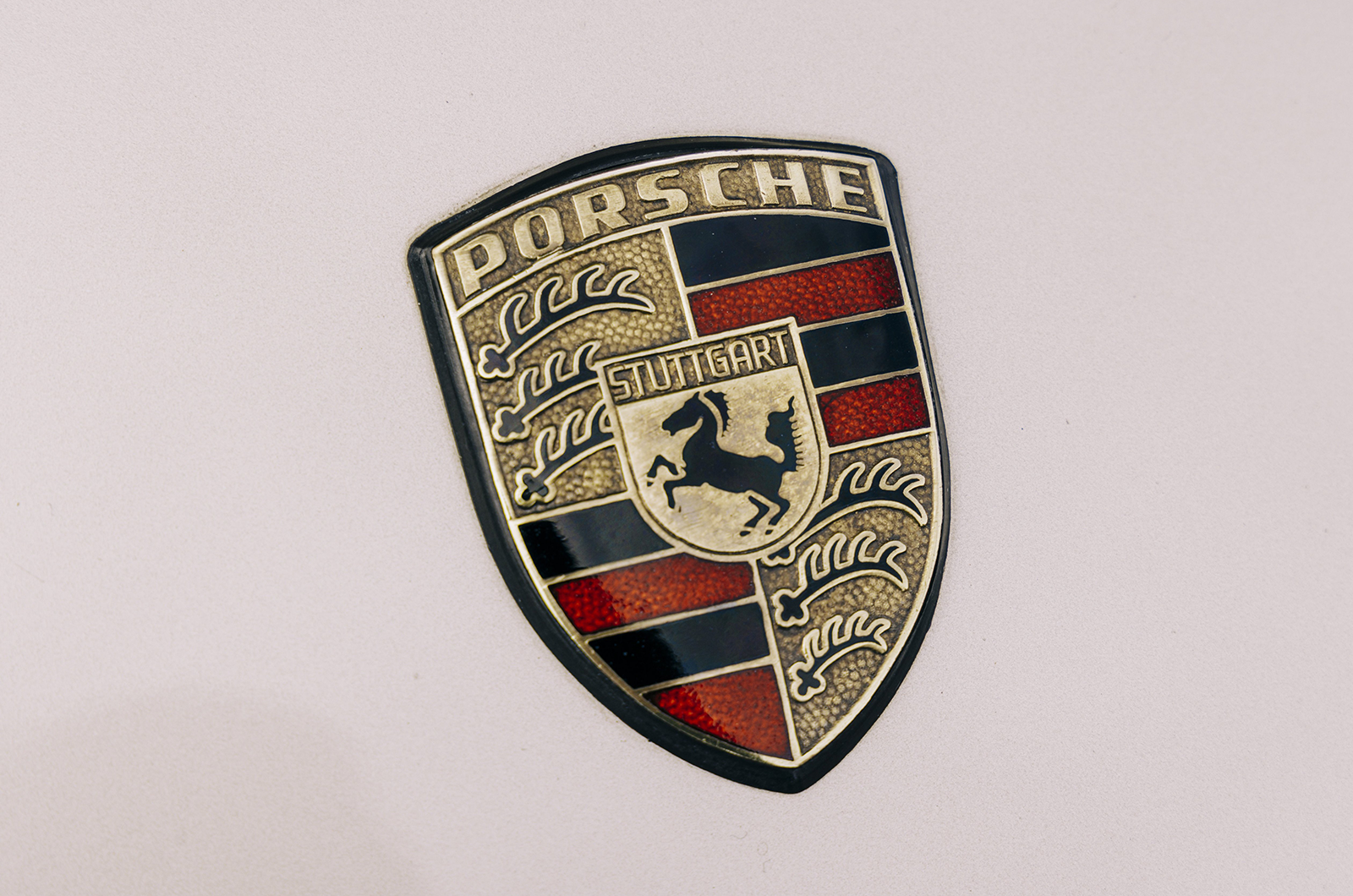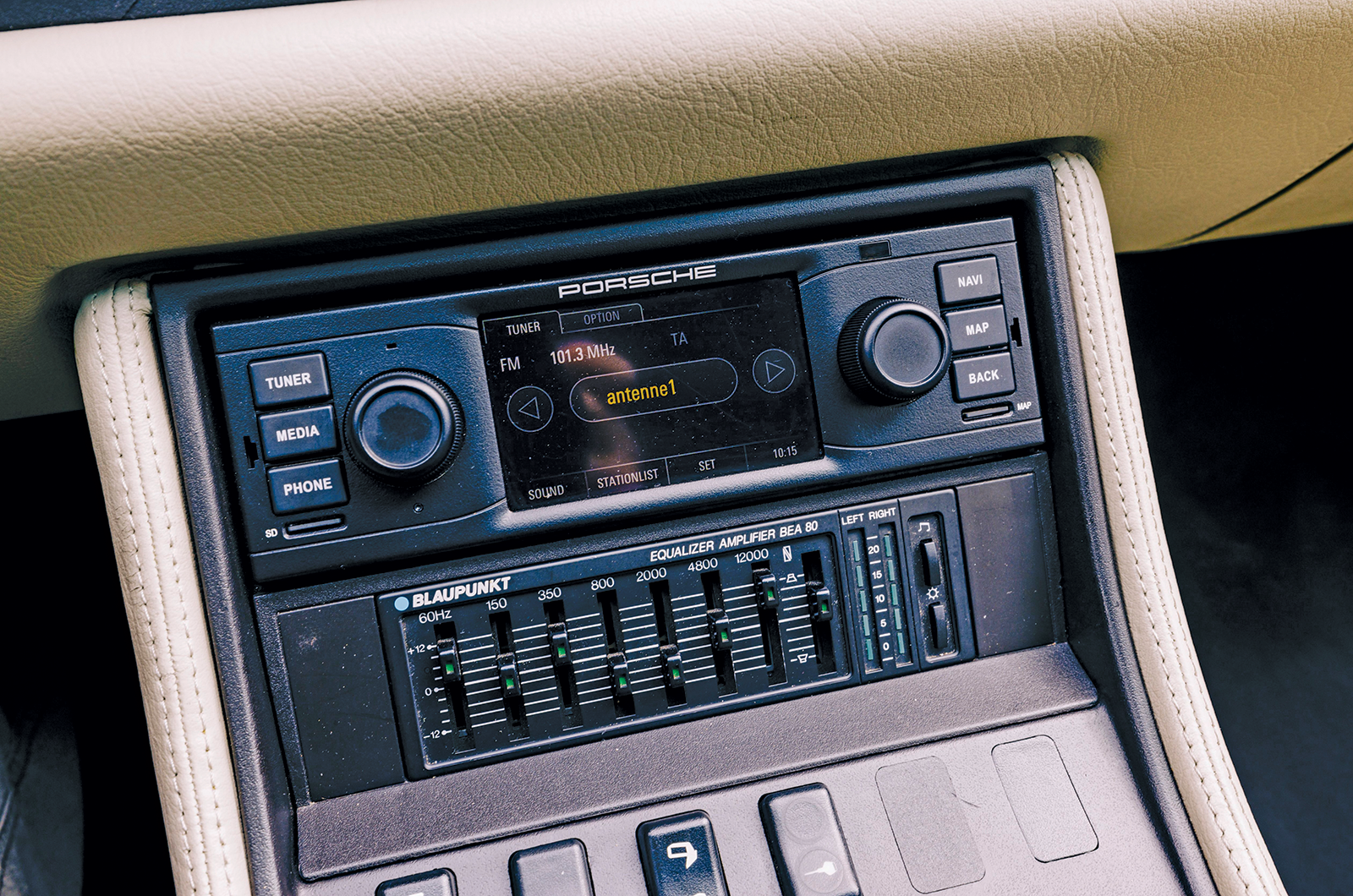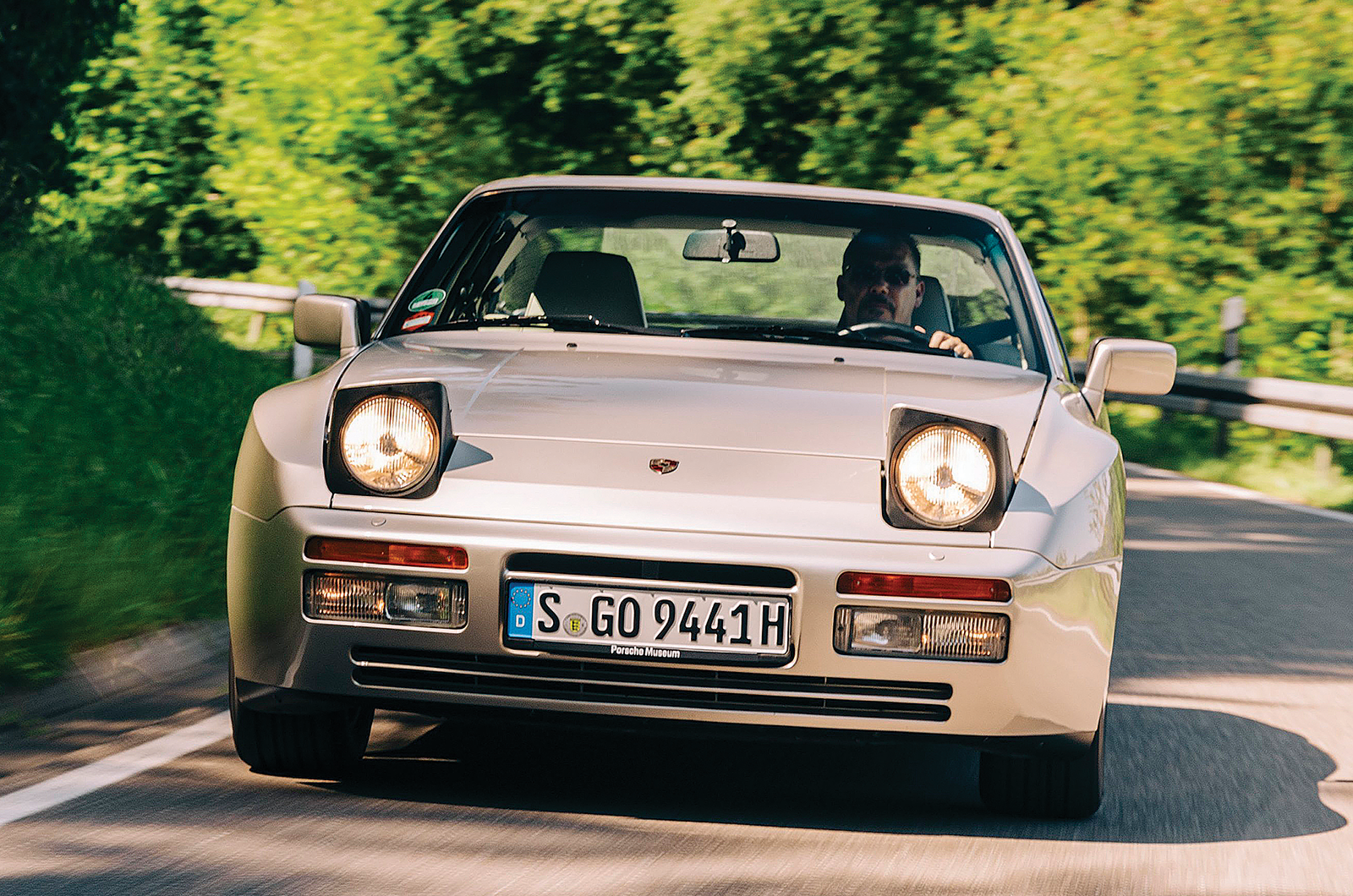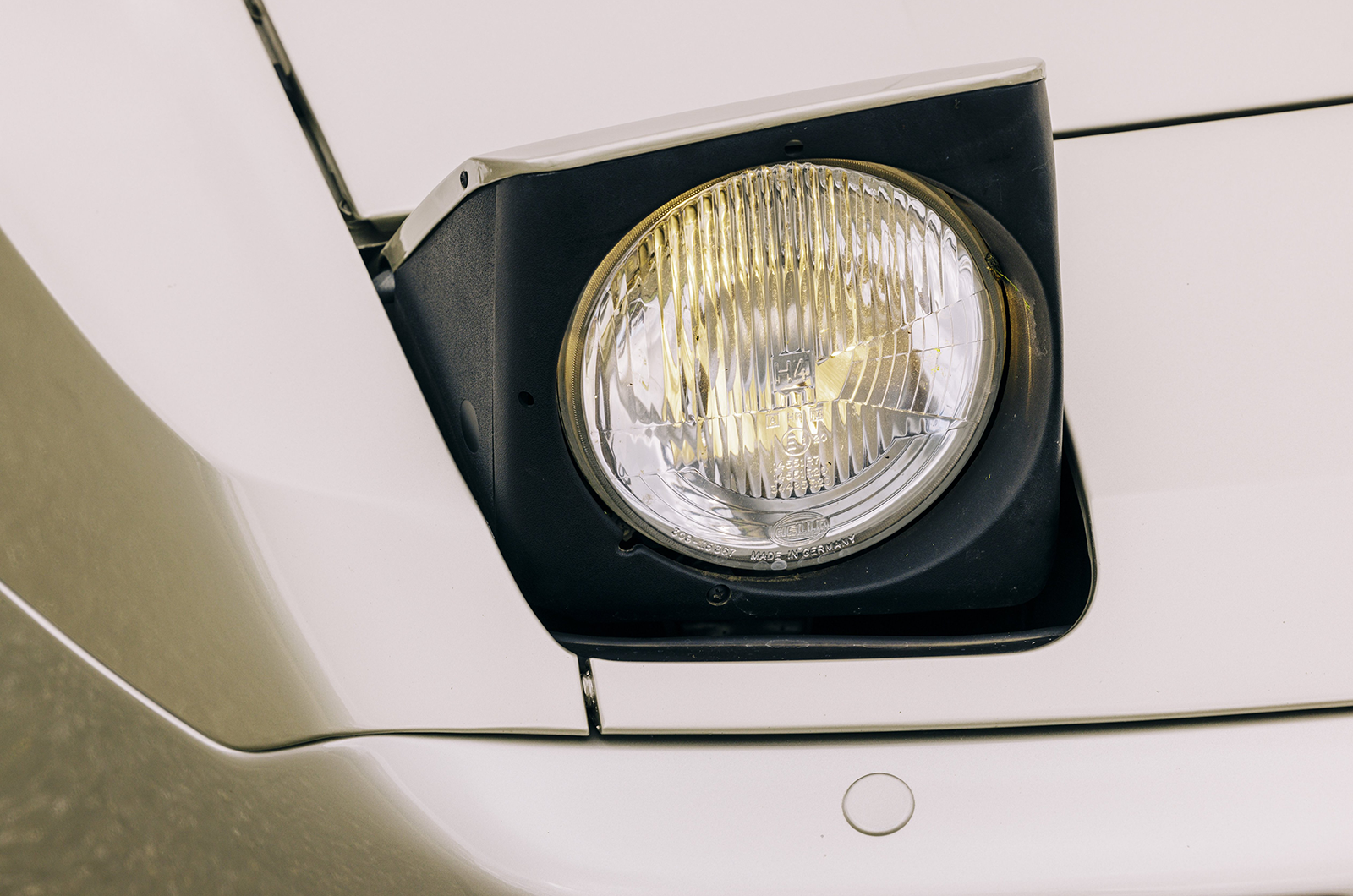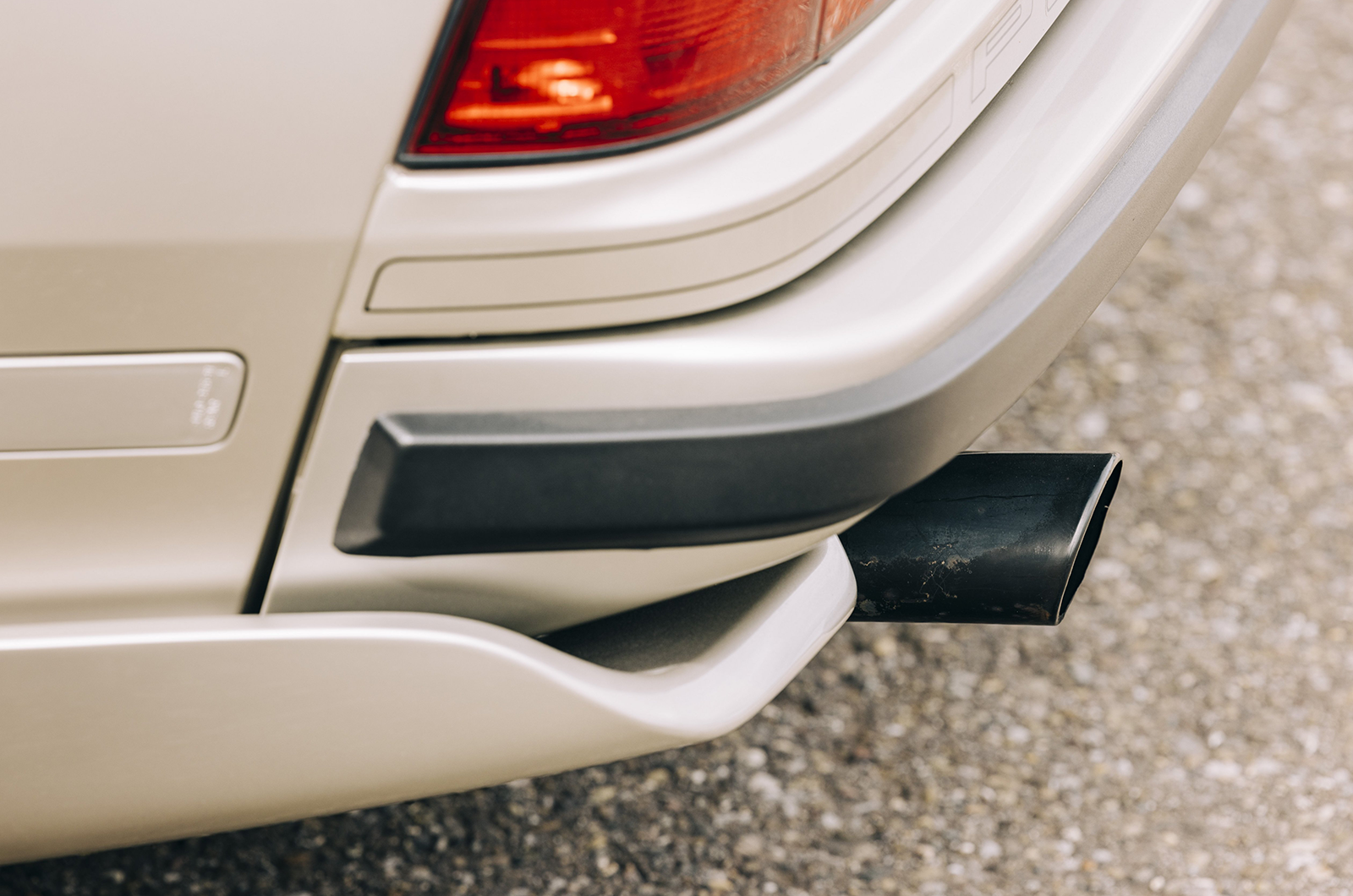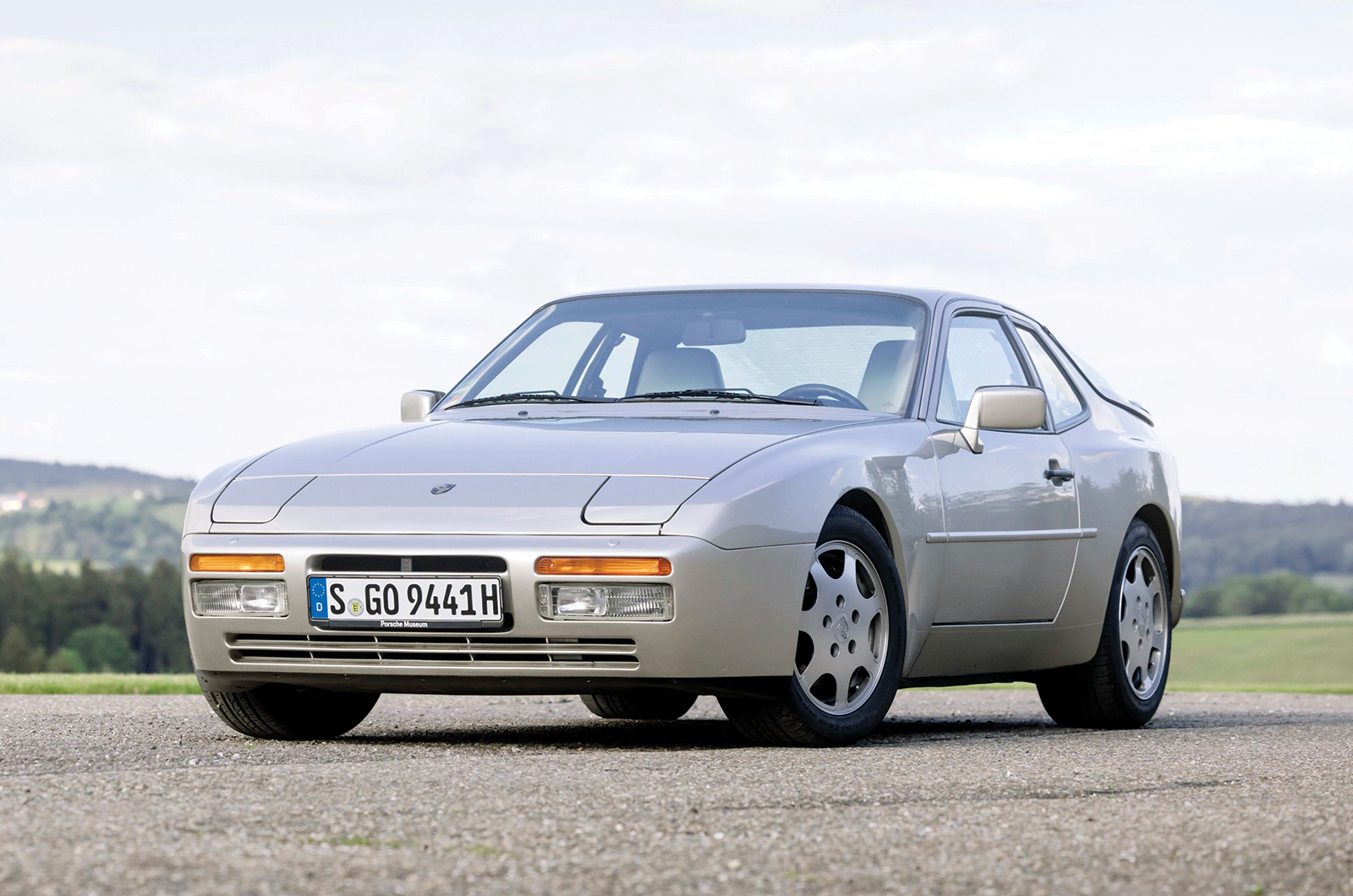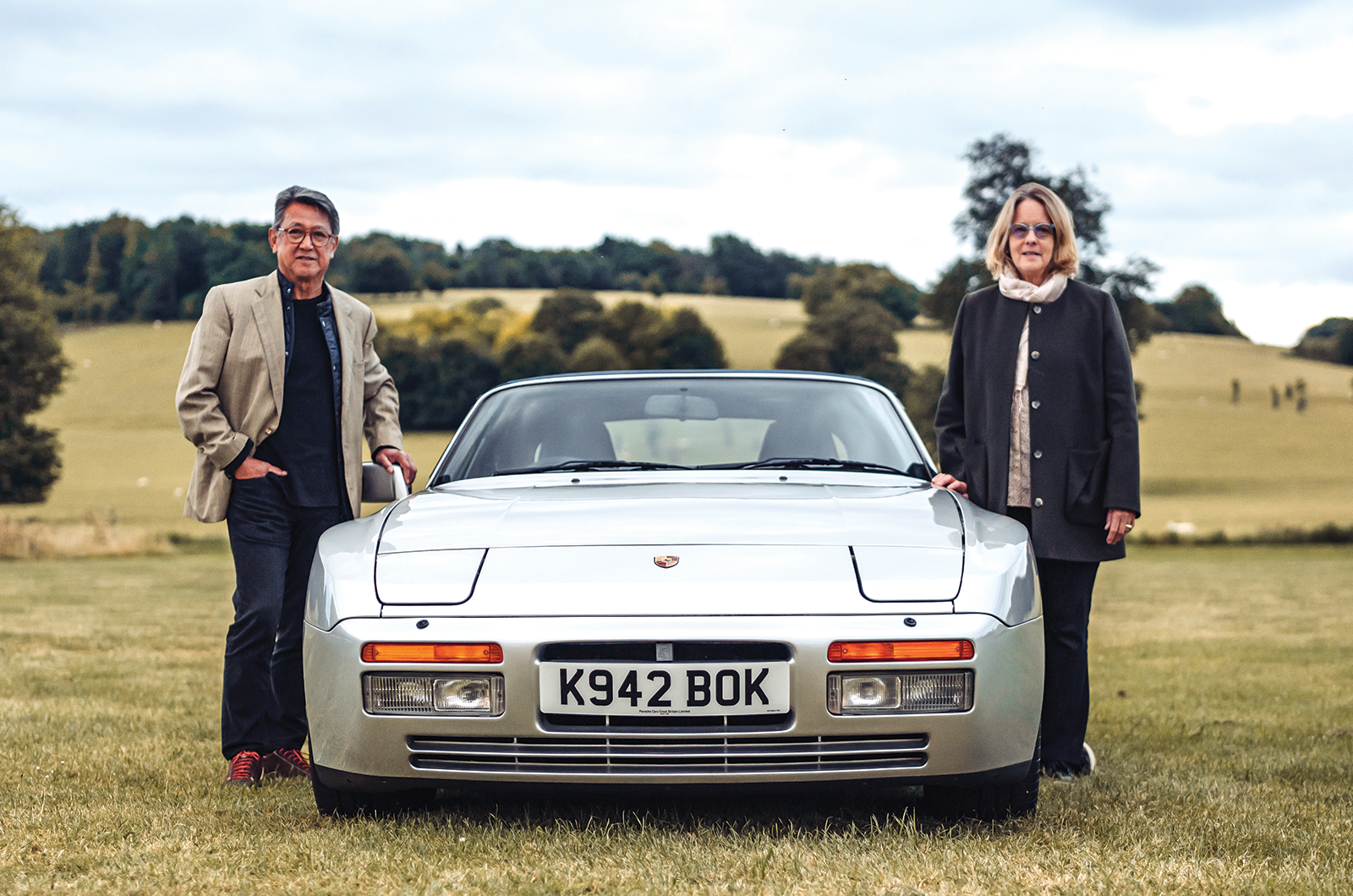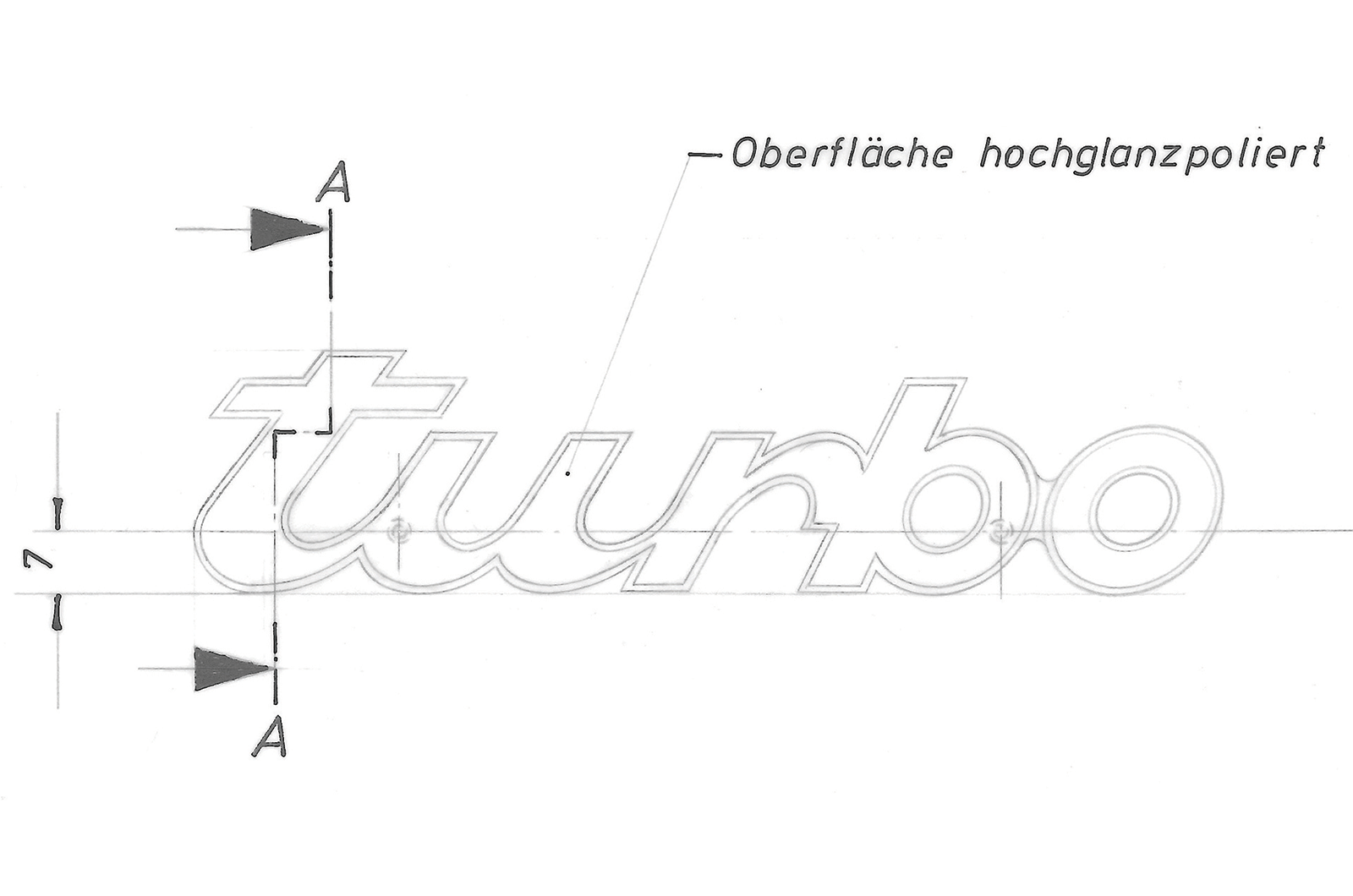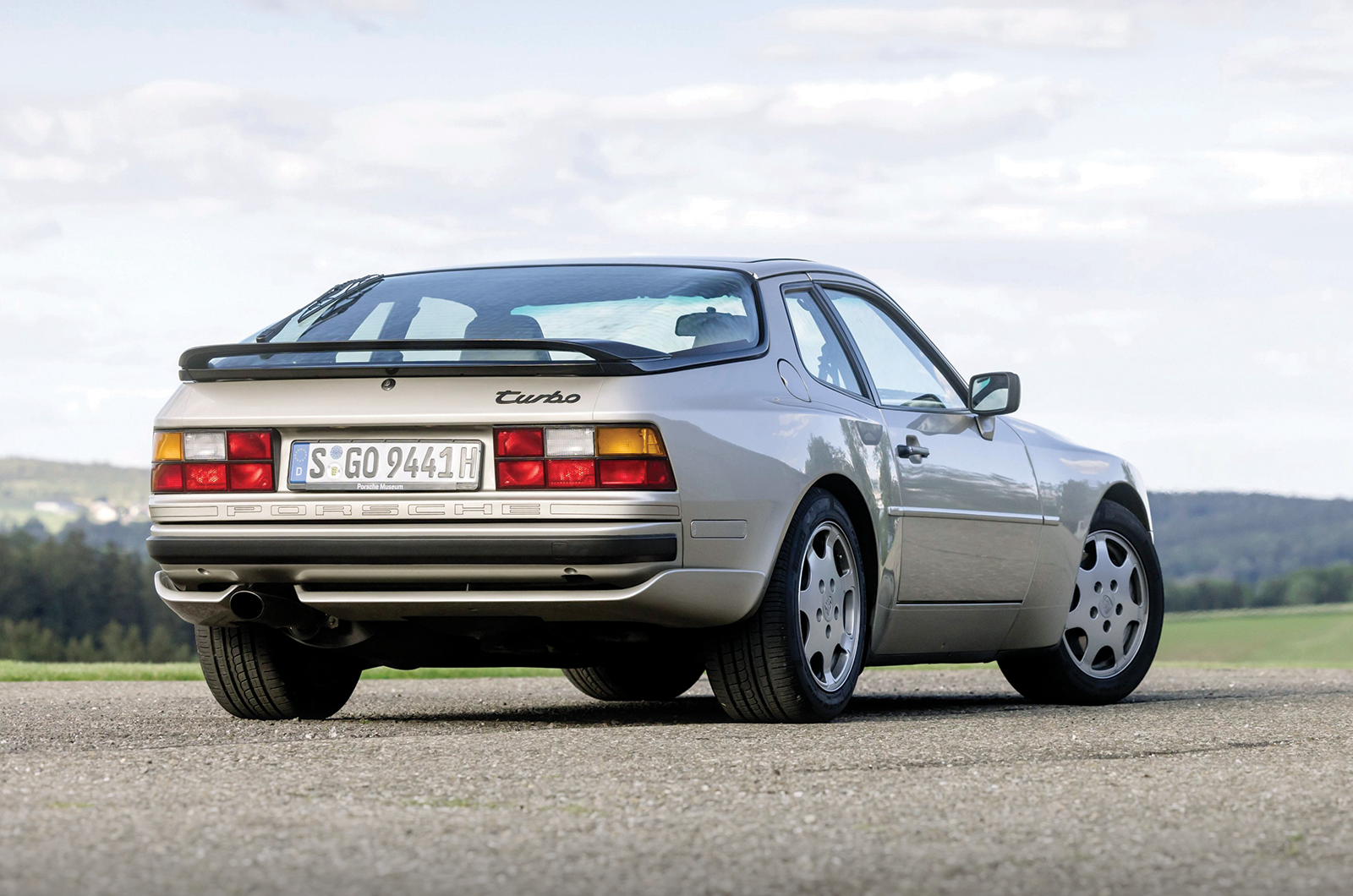With a claimed 5.7 secs 0-60mph time and a 162mph top speed, it had proper supercar performance backed up by polished dynamics, and it didn’t take long for Stuttgart to capitalise on the hype surrounding the SE by making it the default turbo version in 1989.
It’s that very model which Porsche has pulled out of its museum for us to sample on the roads where it was developed in the Swabian Alps.
The first challenge is finding a comfortable driving position.
The Porsche 944 turbo has pop-up headlights
Porsche raised the height at which the steering wheel was mounted on the 944 S2 in 1985, but, coupled with a driver’s seat that’s located quite high, the wheel still rests in your lap.
Best, then, to slide the seat a long way aft and adopt a Stirling Moss-style driving stance with arms outstretched.
The second revelation is that those counter-rotating balancer shafts might be clever, but you’ll find the engine chunters into life before sitting at a lumpy idle.
It’s almost enough to make you question what the Autocar road testers were smoking back in 1989, until you remember that even well-maintained museum cars need a few miles to blow off the cobwebs.
The wider 944 turbo helped to define a new design language for Porsche
And so it is here.
Get some speed into the car and the overwhelming impression is that this is a properly sorted GT by any measure.
Put your foot down and the motor pulls all five ratios hard with little lag, imbuing it with a grown-up, effortless demeanour.
It almost borders on the clinical, until you throw it into a corner and discover that it’s more approachable and exploitable than a 911 of a similar vintage.
It even rides well by modern standards.
The Porsche 944 turbo got an additional air intake above the numberplate
And that’s where the magic of the Porsche 944 turbo lies: in its bandwidth.
It took its maker another 15 years to come up with a non-911 that was faster (the Cayman S), but as a strict two-seater it was a less usable replacement.
And while I’ve been lucky enough to spend lots of time behind the wheel of what many consider to be the sweetest driver’s 944, the 16-valve, 3-litre S2, if you drive both back-to-back you’ll find the turbo feels like the more modern car.
So perhaps it’s time, then, 50 years on from the introduction of the legendary nameplate, for Porsche’s 944 version to be given the credit it deserves.
Because, while the transaxle cars would eventually turn into something of a product cul-de-sac for the firm, for a short time the Porsche 944 turbo took the concept from a mere curiosity to a capable class leader.
Images: Roman Rätzke/Porsche
Porsche’s power couple
Ben (on left) and Cheryl Dimson left their mark on Porsche design © Mark Riccioni
Ben and Cheryl Dimson met as students at California’s ArtCenter College of Design, but their legacies would be built in Stuttgart.
“My first job at Porsche was with Wolfgang Möbius [head of production car design], who instructed me to develop a more homogeneous look for future models,” says Ben, who was at Porsche for eight years.
“They liked the sketches I was doing, which led to them saying: ‘Let’s try this on the 928.’
“And because it looked good on the 928 [launched on the S4], everything snowballed.
“The design department applied the same philosophy to all the other cars.
“The original 944 had a separate bumper design, so the trick for the turbo was to blend it into the front end. I did that by grafting both the lights and a new air intake into the bumper.
“However, the turbo needed way more air than the regular car, so coming up with a new design of intake without perforating the bonnet was a challenge.
“The 924 turbo had four slots above the bumper; with the 944 we wanted to move away from that aggressive design.”
The ‘turbo’ script was designed by Cheryl
“We did that by putting the air intake for the intercooler around the licence plate,” he explains.
“The philosophy goes back to what Tony Lapine [director of design] wanted to achieve as the overall look for Porsche as a brand.
“I take great pride in seeing the public’s acceptance of the car’s design, and it’s amazing to see them become collector pieces.”
Cheryl’s influence on Porsche’s brand identity has been arguably even greater, having developed the ‘Carrera’, ‘turbo’, ‘targa’ and ‘Convertible’ scripts that Porsche still uses to this day.
“I wanted the design to be evolutionary, not revolutionary, so it would evolve from the original Carrera script,” she explains.
“I also wanted to create a consistency across the board, so it was important to work on all four badges at the same time.
“That said, the ‘a’ in Carrera is not quite how I would have designed it – it was modified to work on the back of the 911’s sloping rear end.
“I loved the idea of being able to do branding directly in-house, and I just was lucky that the right portfolio landed on the right desk on the right day.”
Porsche’s turbo track pioneer
Porsche’s one-make racing series was used to develop the 944
With its young-driver programme and one-make Carrera Cup series allowing Porsche to take talented rookies from grassroots to greatness, the firm has an omnipotent presence in GT motorsport.
But did you know much of it is owed to the 944 turbo?
The Porsche turbo Cup one-make series began in 1986, featuring technically identical 944 turbo Cup cars, which were so closely related to their roadgoing counterparts that they were constructed alongside the production models in Neckarsulm.
The series quickly gained popularity due to its large entry lists and thrilling sprint races, and soon expanded well beyond Germany to include further championships in France, South Africa, Canada and the United States.
The competition not only nutured young talent, but also contributed to the development of the 944 turbo road car.
In 1987, the 944 Cup racers received a boost to 247bhp and several chassis upgrades, including a stiffer anti-roll bar, uprated shock absorbers and 928S brakes with ABS.
These modifications were then incorporated into the roadgoing version, culminating in the 1988 turbo SE.
The concept of the Porsche one-make series, which has featured production-based racing versions of the Porsche 911 since 1990, remains one of the most successful in club motorsport today.
Factfile
Porsche 944 turbo SE
- Sold/number built 1985-’91/25,245 (all turbos)
- Construction steel monocoque
- Engine all-alloy, sohc, 8v 2479cc ‘four’, with KKK turbocharger, intercooler and fuel injection
- Max power 247bhp @ 6000rpm
- Max torque 258lb ft @ 4000rpm
- Transmission five-speed manual, RWD
- Suspension independent, at front by MacPherson struts, lower wishbones rear semi-trailing arms, torsion bars; telescopic dampers, anti-roll bar f/r
- Steering power-assisted rack and pinion
- Brakes vented discs, with servo and ABS
- Length 14ft 1in (4290mm)
- Width 5ft 8¼in (1735mm)
- Height 4ft 2¼in (1275mm)
- Wheelbase 7ft 10½in (2400mm)
- Weight 2970lb (1347kg)
- Mpg 19
- 0-60mph 5.7 secs
- Top speed 162mph
- Price new £39,893
- Price now £20-35,000*
*Prices correct at date of original publication
Enjoy more of the world’s best classic car content every month when you subscribe to C&SC – get our latest deals here
READ MORE
Porsche 911 turbo at 50: icons of the air-cooled era
Mazda FC RX-7 Cabriolet vs Porsche 944 S2 Cabriolet: blue-sky thinking
Porsche dream machines: 911 RS 3.8 vs 928 GTS

